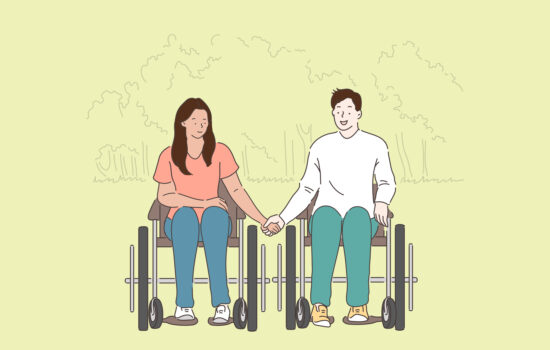Media reports such as “One Million Diabetics by 2050 as Singaporeans Get Older, Fatter” and “Singapore Diabetes Patients Among the Youngest in Asia: Study” point to more Singaporeans being susceptible to the chronic metabolism disorder known as diabetes. According to the Diabetic Society of Singapore, one in nine people aged 18 to 69 in Singapore has this condition. One of the dangers people with diabetes face is the risk of amputation of the lower limbs due to lack of foot care. SPD physiotherapist Winson Teng shares with UPDATES what people with diabetes can do to mitigate foot complications.
Individuals with diabetes usually have a higher risk of developing serious foot complications such as a reduced ability to feel in their feet. When blood glucose levels are not managed well, it can lessen the amount of blood supply to the legs and feet which in turn damage nerves. This leads to foot problems such as:
– poor healing of injuries such as sores, cuts, blisters or ulcers, and/or
– numbness in the feet which may lead to cuts and sores that would go unnoticed.
Therefore, it is very important for people with diabetes to protect their feet by controlling their blood glucose levels and maintaining proper foot care.
Here are a few simple steps on foot care.
Part 1 of 6: Cleaning
- Wash feet daily with mild soap and water. Check the water temperature to be lukewarm with fingers or the elbow before washing feet.
- Dry feet well in between the toes with a dry towel.
- Apply moisturiser daily to prevent feet and heels from getting dry and forming cracks, which in turn can lead to infection.
Part 2 of 6: Checking
- Inspect feet daily for injuries, swelling, redness, blisters, or pus discharge in between toes, around the heel and the sole.
- Use a mirror to check the sole where necessary.
Part 3 of 6: Cutting nails
- Keep toe nails short, but not too short, by trimming them every week.
- The proper way to trim the nails is to do so straight across.
- Use a nail file to file across the edge of the nails.
- Do not trim deeply into the corners of the nails.
Part 4 of 6: Wound cleaning
- Clean wounds using normal saline. Then pat dry the area carefully and gently.
- Apply antiseptic medication to the wound and cover with a clean and dry dressing pad.
- Check the wound daily. Visit a doctor or podiatrist if the wound does not get better after a few days.
Part 5 of 6: Footwear
- Always wear covered shoes.
- Avoid going barefoot.
- At all times, wear comfortable shoes with cotton socks or stockings that fit the feet well.
- Socks and stockings should not be too tight
- Check shoes to ensure there are no objects inside of them and that the lining within is smooth before wearing them.
- Do not wear open-toe slippers or massage slippers.
Part 6 of 6: Things to avoid
- Do not soak feet in very cold or very hot water.
- Avoid massage machines, foot reflexology and acupuncture.
- Consult a doctor before using or trying any of them.
Self-Management
Adopting good foot care habits help keep feet healthy.
Live a Healthy Lifestyle
– Exercise daily
– Quit smoking
– Adopt a healthy diet
– Monitor and maintain healthy blood sugar level
– Visit a doctor or podiatrist for follow-up appointments when necessary
Useful Resources
Health Promotion Board Singapore
http://www.hpb.gov.sg/HOPPortal
National Diabetes Education Program USA
http://ndep.nih.gov/publications/publicationdetail.aspx?pubid=67
American Diabetes Association
http://www.diabetes.org/living-with-diabetes/complications/foot-complications/foot-care.htm
Photos: Health Promotion Board Singapore





